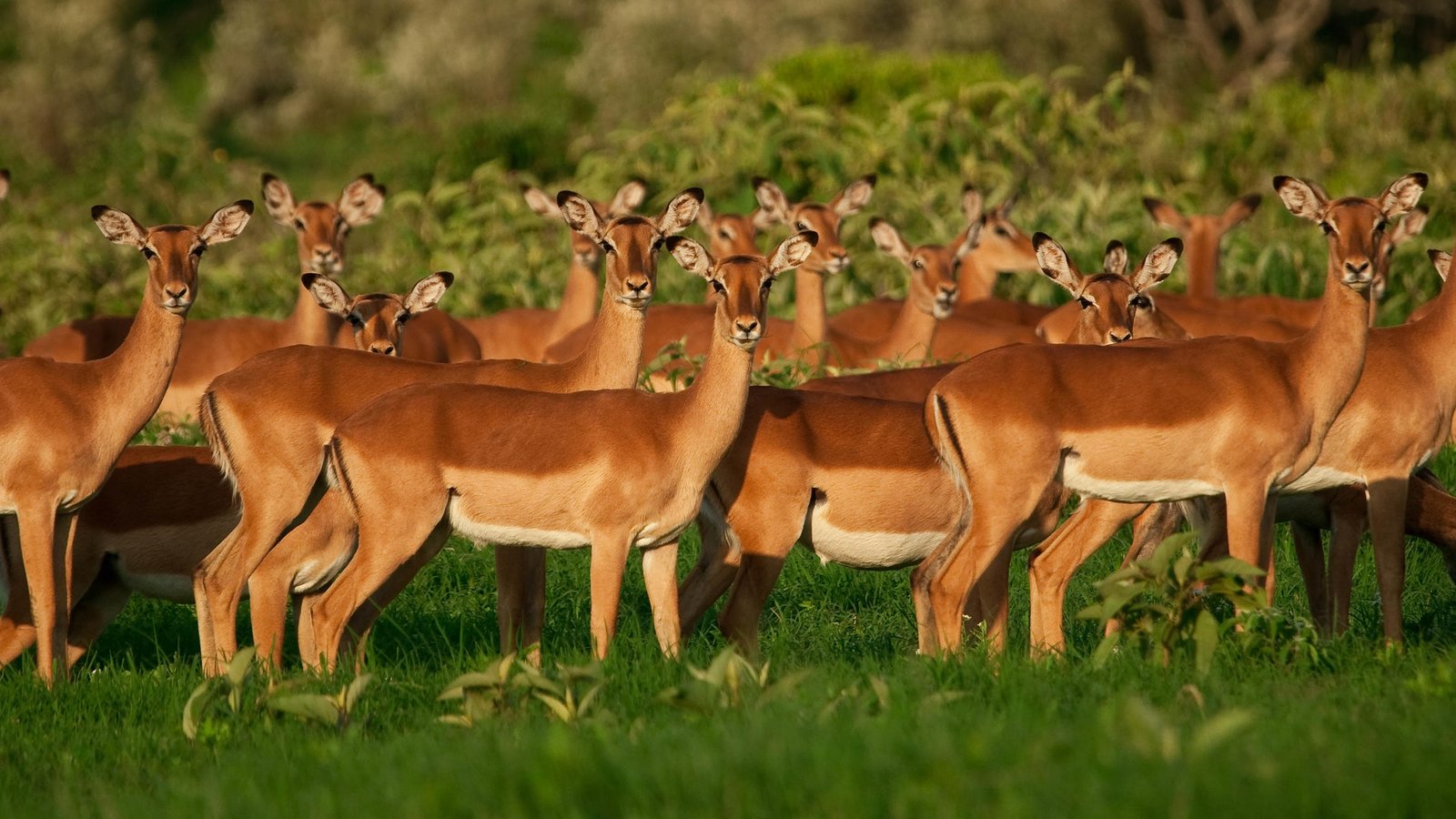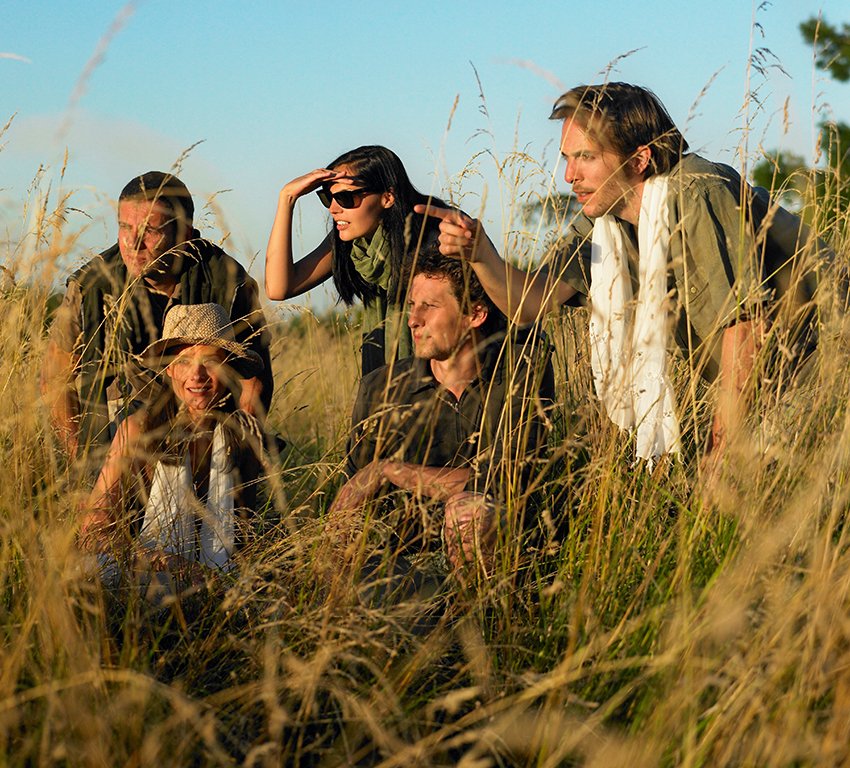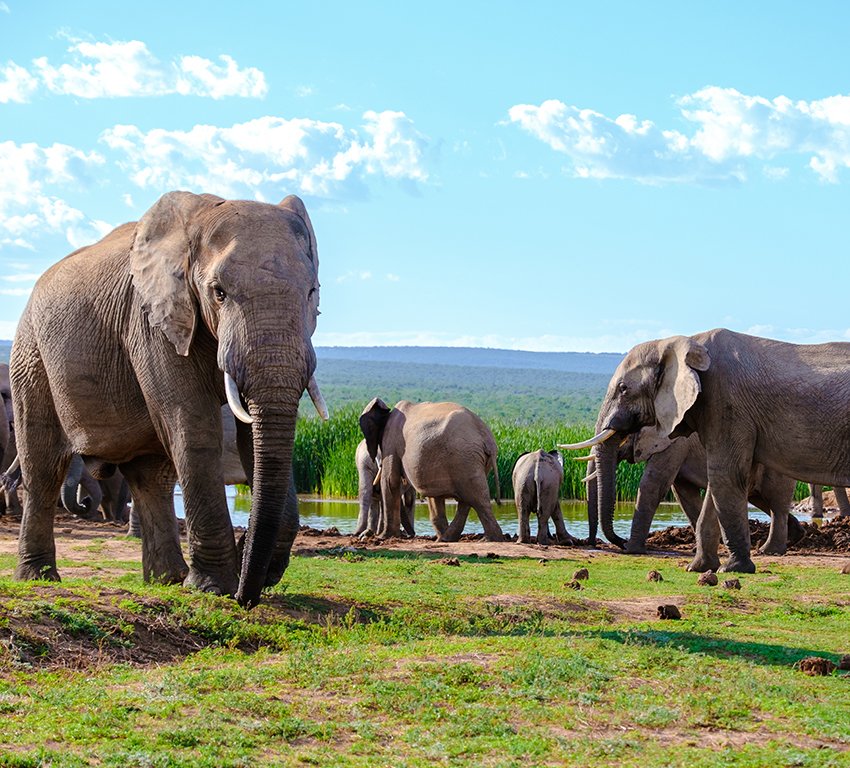Encounter Serengeti’s Diverse Antelope Species
Africa’s Serengeti National Park in Tanzania offers the perfect opportunity to get up close with a variety of antelope species. Situated in northern Tanzania, this expansive park covers approximately 14,763 square kilometers, with endless plains extending northwards to the Masai Mara Reserve in Kenya and connecting to the Ngorongoro Conservation Area in the south. The Serengeti is renowned for its vast herds of plains animals, including wildebeests, zebras, gazelles, and various antelope species. It stands as the sole place in Africa where land animal migrations continue to unfold. Designated as a UNESCO World Heritage site since 1981, the park boasts over 500 bird species and 300 mammal species, including 16 distinct types of antelopes, which are detailed below.
Antelope Varieties in Serengeti
While embarking on game drives in Serengeti National Park, you’ll easily spot diverse antelope species. The following list will help you recognize each species and remember their key characteristics. Let’s delve into the list:
- Wildebeest (also known as the gnu): Among the largest antelope species, wildebeests are an integral part of the Great Migration in Serengeti. Their massive herds, numbering around 2 million, migrate annually from Southern Serengeti to Masai Mara Reserve in Kenya and back to Tanzania through the southern Serengeti, especially in the Ndutu area. These migrations, a continuous and cyclical process, capture the attention of visitors year after year. Key characteristics include their large size, varying coloration, vulnerability to predators like hyenas and lions, and a long, rectangular-shaped head.
- Eland: The eland, the largest antelope species in the African savanna, boasts an impressive, ox-like build and striking coat patterns. Males can reach a shoulder height of 1.5 meters and weigh up to a ton, while females are slightly smaller and lighter.
- Lesser Kudu: This intriguing antelope species prefers warm climates and is relatively scarce in the Serengeti. Spot them primarily in the Southwestern Serengeti. Lesser kudus have a lighter build and shorter stature, with males weighing around 92-108 kg and standing at 100 cm. They rely less on water for survival, sourcing their hydration from fresh wild fruits, consuming water only when available.

- Reedbuck: Found in the grasslands and marshes of Serengeti, reedbucks are distinguishable by the round glandular spots below each ear. They graze at night and seek shelter during the daytime, with females giving birth to single calves after a gestation period of approximately 7.5 months. Males possess curved forward-pointing horns, and this antelope species does not have a fixed breeding season.
- East African Oryx: Although they are becoming rarer, you might be fortunate enough to encounter this territorial antelope during your Serengeti game drives. East African oryxes use their speed as a defense against predators and have the remarkable ability to detect rainfall from 50 miles or more away.

- Grant’s Gazelle: Scientifically known as Gazella Granti, Grant’s gazelles can sometimes be mistaken for Thomson’s gazelles. The key difference lies in their size and the extent of the white patch above the tail. Grant’s gazelles are larger and exhibit greater variation in horn size and coloration.
- Thomson’s Gazelle: Named after researcher Joseph Thomson, these gazelles have light brown coats with dark stripes down their sides. They are smaller than Grant’s gazelles and can be identified by the white patch on their rump. Males have longer horns than females and are known for migrating in search of food and water during dry seasons, relying on strong senses of hearing, sight, and smell for survival.
- Waterbuck: Recognizable by their large rounded ears and distinctive white circular markings on their rump, waterbucks prefer staying near water sources. Their coats have a water-repellent oil layer that protects them from moisture.
- Hartebeest: Often found in medium and tall grasslands and savannas during Serengeti safaris, hartebeests are not selective in their diet and can tolerate poor food quality. Breeding among hartebeests can occur throughout the year, depending on food availability. They are hunted by cheetahs, lions, hyenas, and leopards.

- Klipspringer: A small antelope species found in rocky terrain, klipspringers are characterized by their compact size, short neck, large hindquarters, and the ability to jump from rock to rock. Their coloration varies depending on location, and they are easily identified by their rounded, large ears and small, rudimentary tails.
- Bushbuck: Inhabiting forest edges, rainforests, and bush savannas, bushbucks are solitary animals known for their ability to jump 6-foot-high fences. They move quietly while feeding and are selective eaters. Males have horns, while females do not.
- Impala: Distinguished by black spots on their feet and an elongated white spot above their eyes, impalas are easily recognizable. Males have horns, while females do not. They drink water during the hottest parts of the day to avoid predators, as many predators rest during that time.
- Oribi: Oribis avoid areas dominated by shrubs, bushes, and trees and opt for regions with lower vegetation density. They have long necks, slightly curved, spiky horns, and slender ears. Their diet primarily consists of short grass, and they can run at speeds of 25 to 31 miles per hour.
- Steenbok: Also known as the Dwarf antelope due to its small size, the Steenbok can be identified by the black spot or scent gland located below each ear. Females are slightly larger than males. They are known for their preference for young leaves, plant shoot tips, flowers, and fruits.
 A family of elephants in Tarangire National park, Tanzania.
A family of elephants in Tarangire National park, Tanzania.
- Dik-Dik: Named for the distinctive wheezing and whistling “zik-zik” or “dik-dik” alarm call made by females, dik-diks are territorial animals that use dung, urine, and scent to mark boundaries. When attacked, they run in a zigzag pattern to confuse predators but are vulnerable due to their small size.
- Topi: Medium-sized topis feature a reddish-brown to purplish-red coat and favor floodplains, occasionally venturing into dry areas. They can graze on green pastures for extended periods without needing water. Topis are most active in the morning and evening, seeking shade during the hot hours.
- Gerenuk: Recognized by their long necks and legs, gerenuks are known for their exclusive browsing habits and light brown or tawny-colored fur. Only males have horns, and they inhabit areas with few trees and sometimes desert regions. They are cooperative animals.













